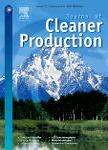版权所有:内蒙古大学图书馆 技术提供:维普资讯• 智图
内蒙古自治区呼和浩特市赛罕区大学西街235号 邮编: 010021

作者机构:Zhejiang Univ Coll Mech Engn State Key Lab Fluid Power Transmiss & Control Hangzhou 310027 Zhejiang Peoples R China Hangzhou Dianzi Univ Res Inst Ind Engn & Management Hangzhou 310018 Zhejiang Peoples R China Shandong Univ Sci & Technol Dept Ind Engn Qingdao 266590 Peoples R China
出 版 物:《JOURNAL OF CLEANER PRODUCTION》 (清洁化生产杂志)
年 卷 期:2016年第137卷第0期
页 面:1647-1662页
核心收录:
学科分类:0830[工学-环境科学与工程(可授工学、理学、农学学位)] 08[工学]
基 金:National Natural Science Foundation of China Defense Industrial Technology Development Program of China [A3920110001] Ningbo Science and Technology Innovation Team [2011B81006]
主 题:Machining Machining system Energy consumption Therblig Integration of process planning and scheduling Genetic algorithm
摘 要:Green Low-carbon development has been recognized as a key requirement for advanced manufacturing, and reducing the energy consumption of machining system is a critical aspect. Traditionally, process planning and scheduling were carried out separately and sequentially in manufacturing industry, which limits the work for energy-efficient machining system. Considering the fact that the functions of these two systems are usually complementary, the energy-saving of machining system can be further improved if they are tightly integrated. In this paper, an integration model based on nonlinear process planning (NLPP) is proposed to implement such energy-saving method, and the Therblig-based model is used to predict the energy consumption of machine tools in product manufacturing process. Then, a genetic algorithm-based approach is adopted to solve the established integration model. Given the alternative process schemes generated by NLPP, such integration model can help select the suitable process plan and machines for each job and generate the scheduling scheme simultaneously for saving energy. To verify the energy-saving effect and the performance of the algorithm, case studies have been conducted and the experimental results show that the energy-saving potential in a shop floor environment can be further enhanced through the integration of process planning and scheduling and the solution method is feasible. (C) 2016 Elsevier Ltd. All rights reserved.